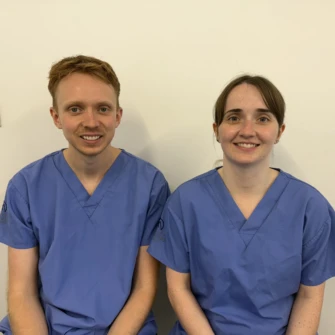Top tips for brushing braces
Remembering some simple hygiene steps can protect your oral health
Published: 21 October 2024
Did you know that normal toothbrushing only reaches 60% of a tooth’s surface? For patients with braces, that number is even smaller. Between the brackets and metal wires, keeping your teeth clean whilst wearing braces is challenging.
If oral hygiene is neglected whilst wearing braces, food can get stuck in the brackets. In particular, trapped sugary foods can cause tooth decay. Damaged or weakened teeth can affect the success of treatment and the final result achieved.
Toothbrushing
Maintaining your regular toothbrushing schedule twice a day is essential. But you should also brush after every meal or snack to stop food getting stuck between the brackets. You can carry a soft toothbrush throughout the day to do this. It may seem like a lot, but it is important. Cutting down on snacks also means you may brush fewer times a day.
Technique is also vital for good brushing, which involves the 45-degree angle. This means holding the toothbrush so that the bristles are facing the gumline. Doing so will better remove plaque from the gumline, as well as above and below the brackets.
Orthodontic patients should also avoid using whitening toothpastes. This is because the brackets cover sections of the teeth, limiting the whitening effect. When the braces are removed, off-white areas will be notable where the brackets were. It is best to consider professional whitening once the orthodontic treatment is completed. This will ensure the best results.
Interdental cleaning
Toothbrushing reaches the front, back and top of each tooth. This means the sides remain untouched. Undisturbed food debris leads to tooth decay or gum disease. Using interdental cleaning solutions can remove this threat. If the interdental spaces are big enough, an interdental brush is best to use. Not only are they easier to handle than string floss, but they are better at working around the braces and wires.
String flossing is ideal for the tiniest interdental spaces. However, be prepared to take more time with this whilst wearing braces. String flossing can extend the daily oral hygiene routine by 10 minutes when done correctly, but the results will be worth it.
For some, string flossing can be a struggle – especially with braces. A water flosser is another available option for interdental cleaning. They use a steady stream of water to blast trapped food particles out from their hiding places. Water flossers can wash the brackets and wire too. As the cleaning operation is shorter, they can speed up the oral hygiene routine whilst producing the same results.
Avoid foods
Certain foods can be damaging to both your teeth and your braces. Sugary snacks are the enemy of healthy teeth. Sugar, and the acid it produces, leads to tooth decay. There are also two risky food textures that can damage braces: sticky, and hard. This includes:
- Popcorn
- Nuts
- Hard sweets, such as rock or gobstoppers
- Chewy sweets, such as jellybeans or bonbons
- Caramel and toffee
- Ice
- Chewing gum
Some healthier foods will also need cutting into smaller pieces. Examples include raw vegetables, fruits, bread and corn on the cob. This will reduce the risk of damage to the brace. If the brace is impacted, the delay in an appointment to fix it can slow down the treatment. The longer the braces are needed, the greater the risk of tooth decay or gum disease.
There are many foods recommended for braces. These include yoghurts, soft fruits, cheese, pasta and mashed potatoes. These are softer and less damaging, but may still contain high levels of sugar. So eat soft, but clean well!
Wrapping things up
Braces leave you with an enhanced smile that you can be happy with. To maintain a healthy mouth during treatment, remember the three essentials:
- Brush after eating
- Use interdental cleaning solutions daily
- Prioritise soft foods
Maintaining regular dental appointments can keep your oral hygiene in the best condition throughout orthodontic treatment. At Clyde Munro Dental Group, we offer a range of related procedures, including the latest in high-quality orthodontics. With professional guidance on the dos and don’ts of braces, we can help you get the most out of your treatment. Find your local Clyde Munro practice.





